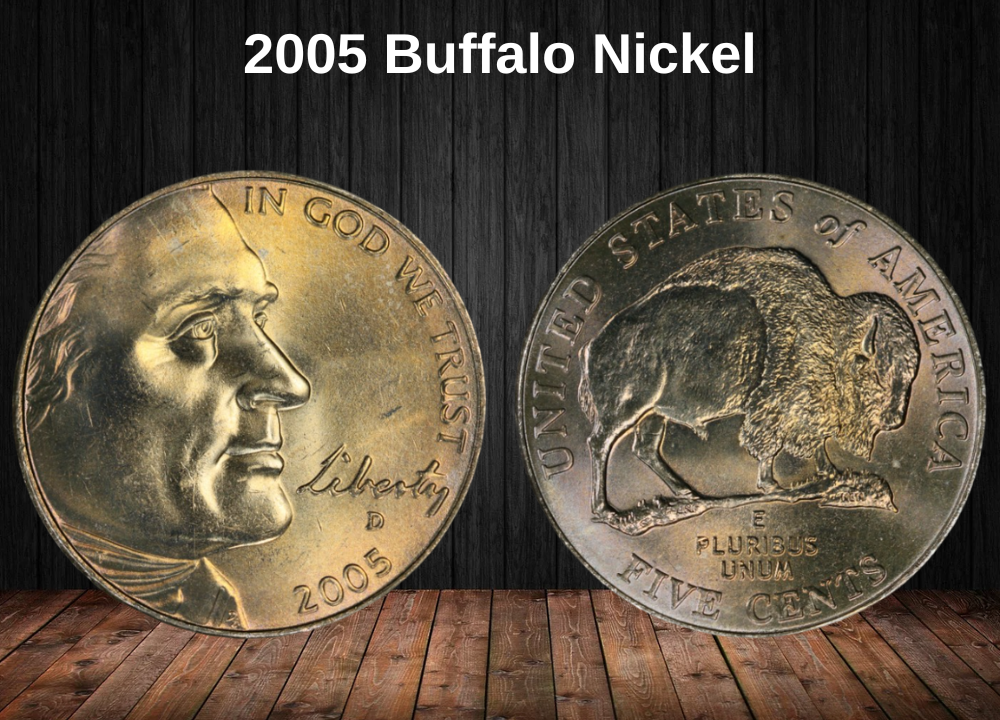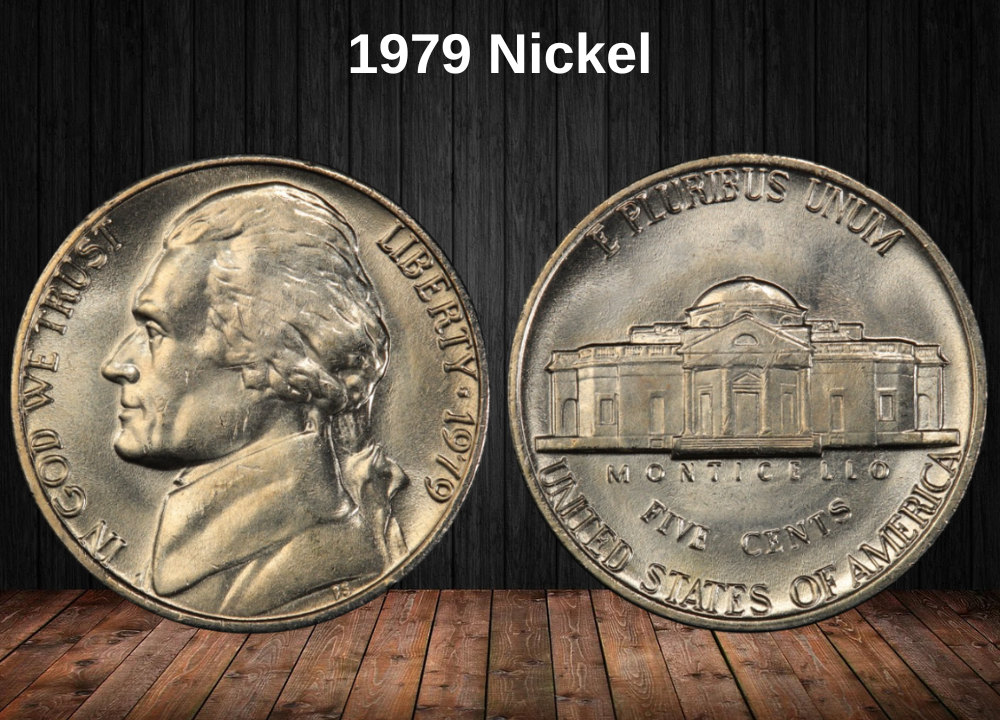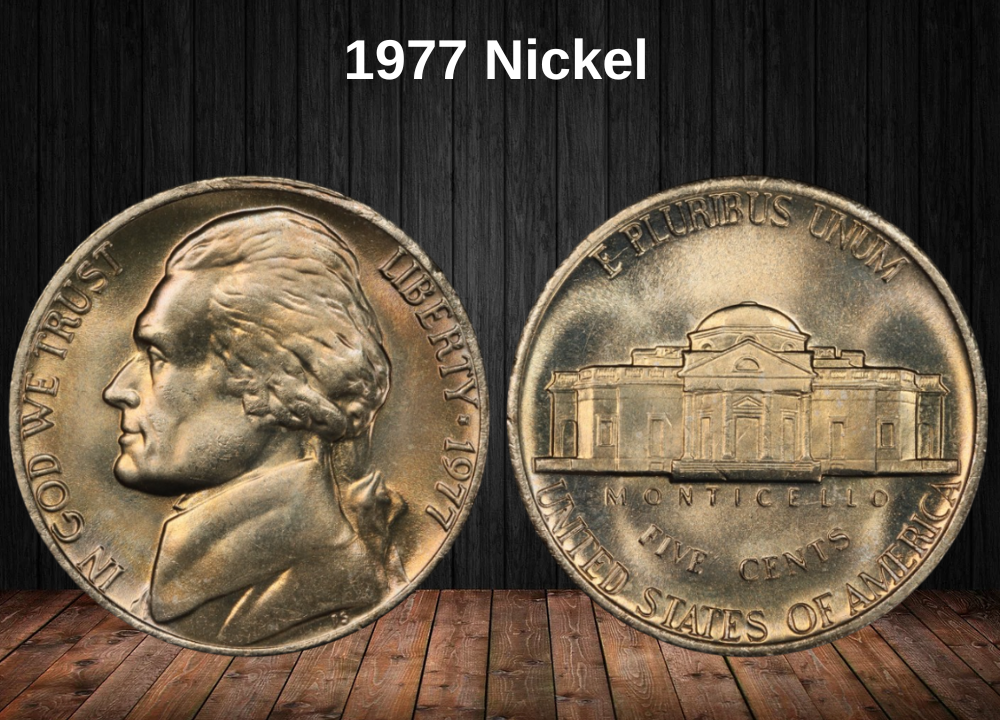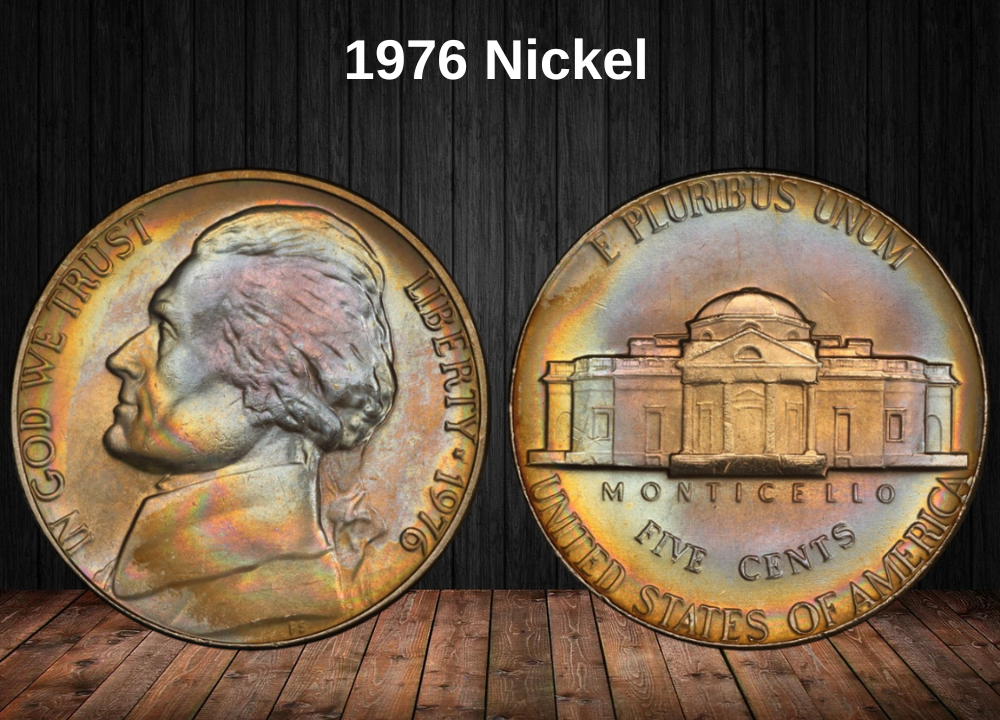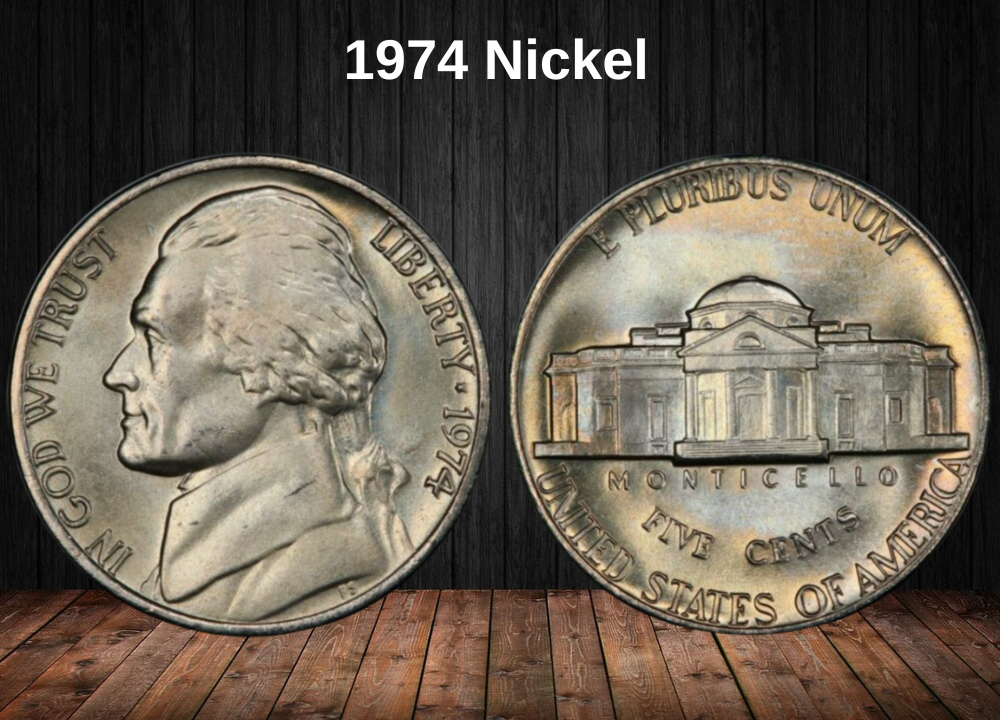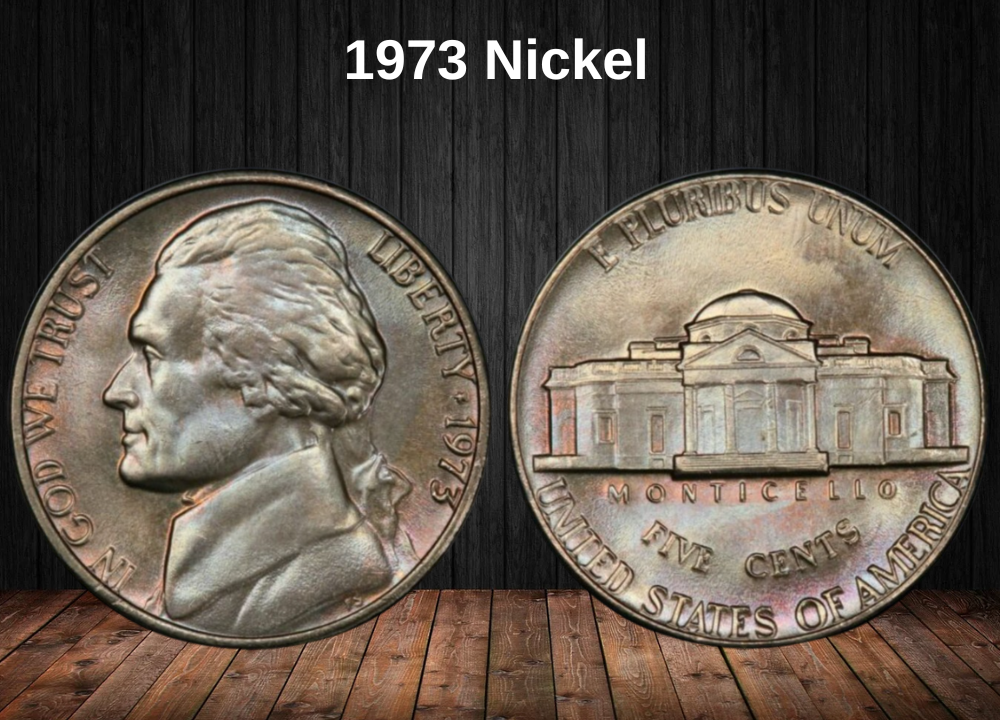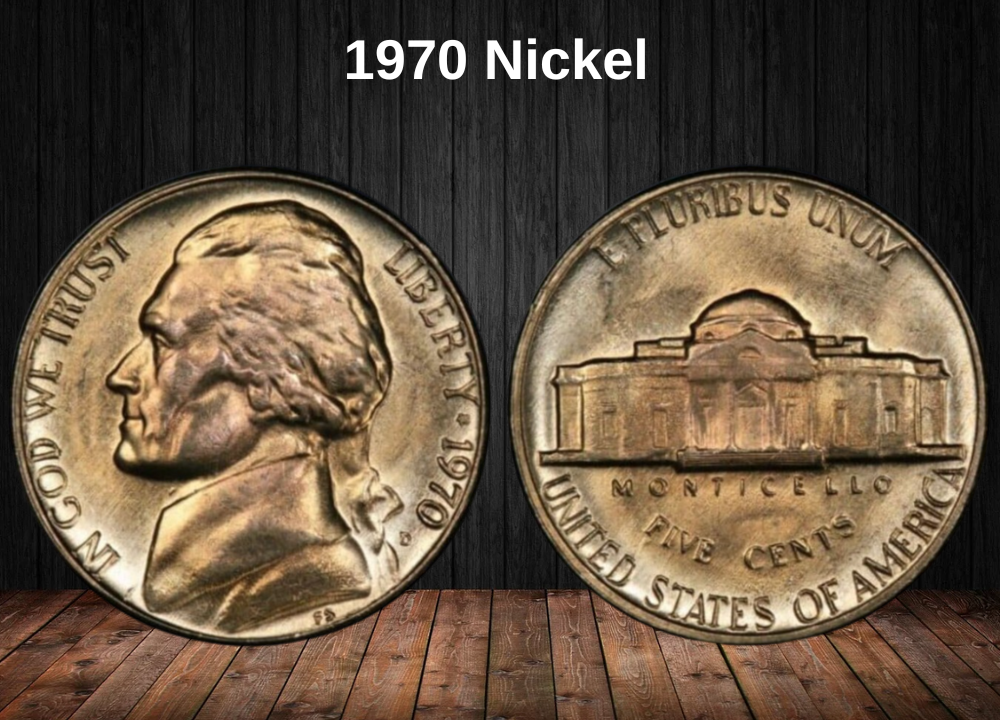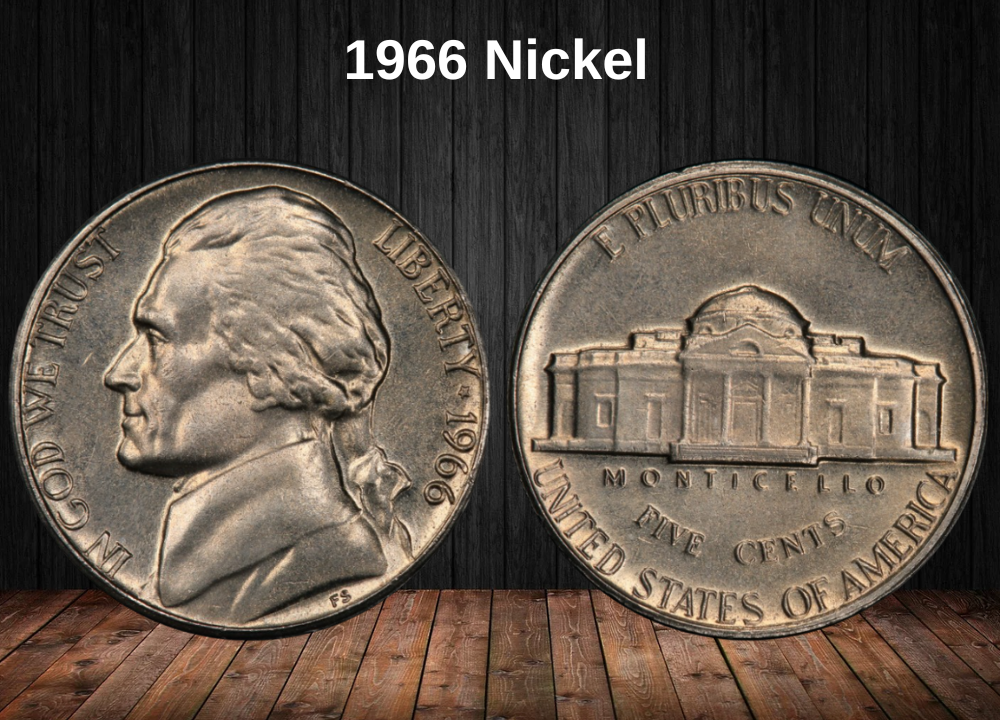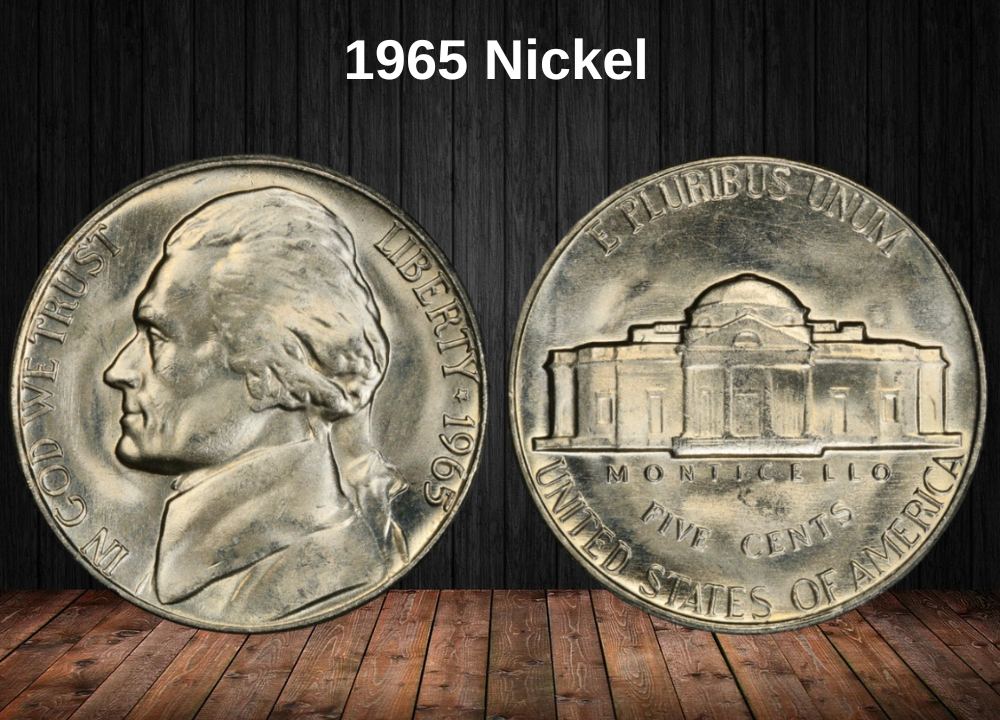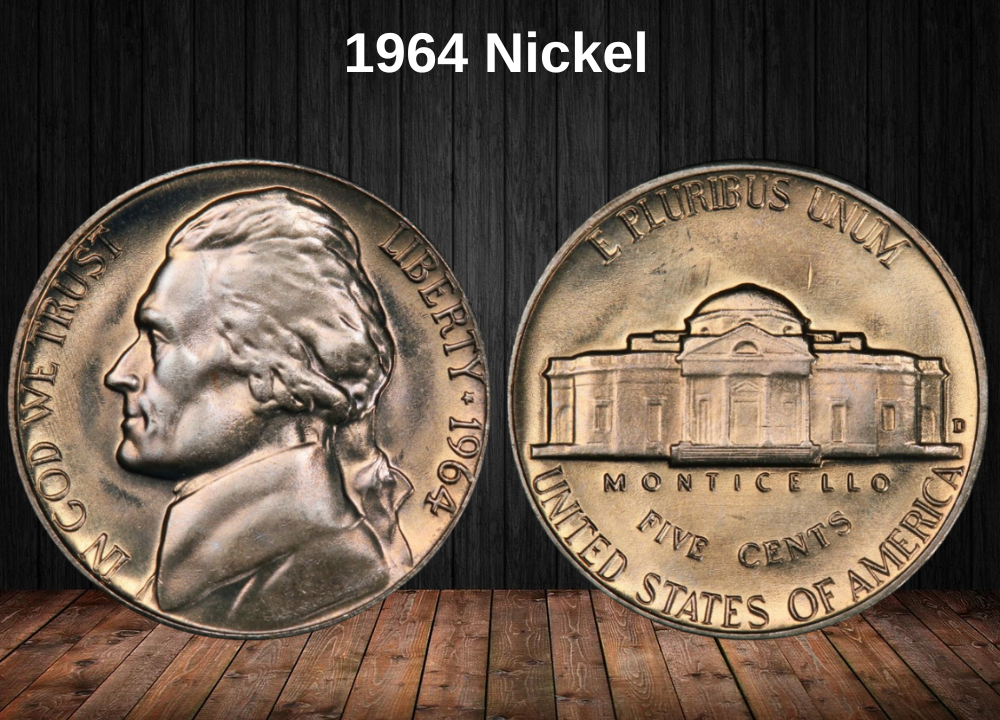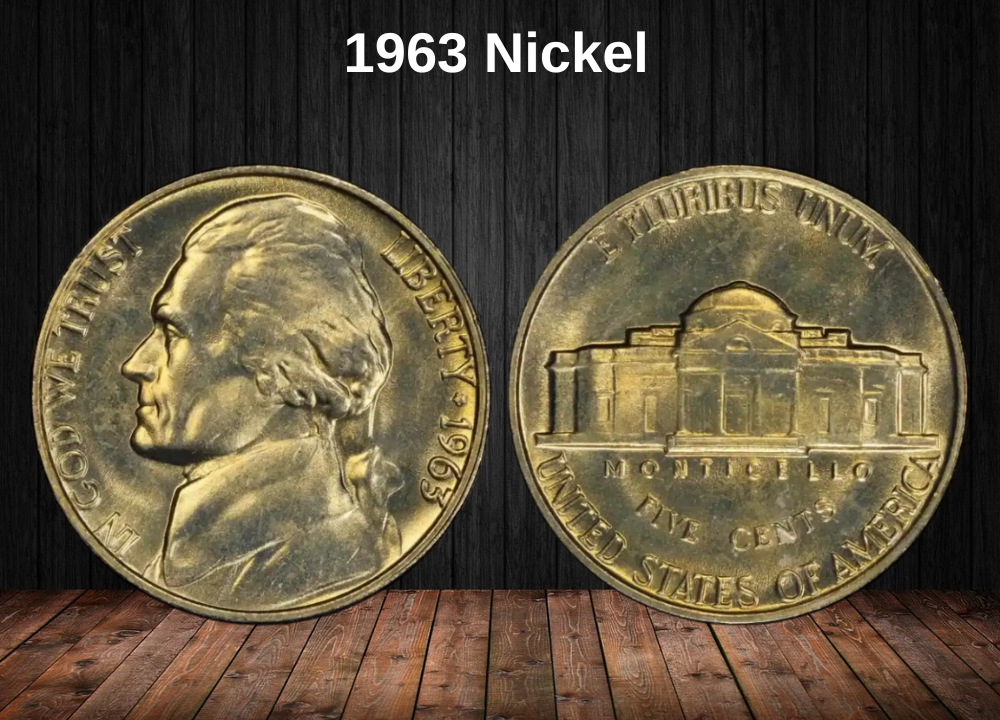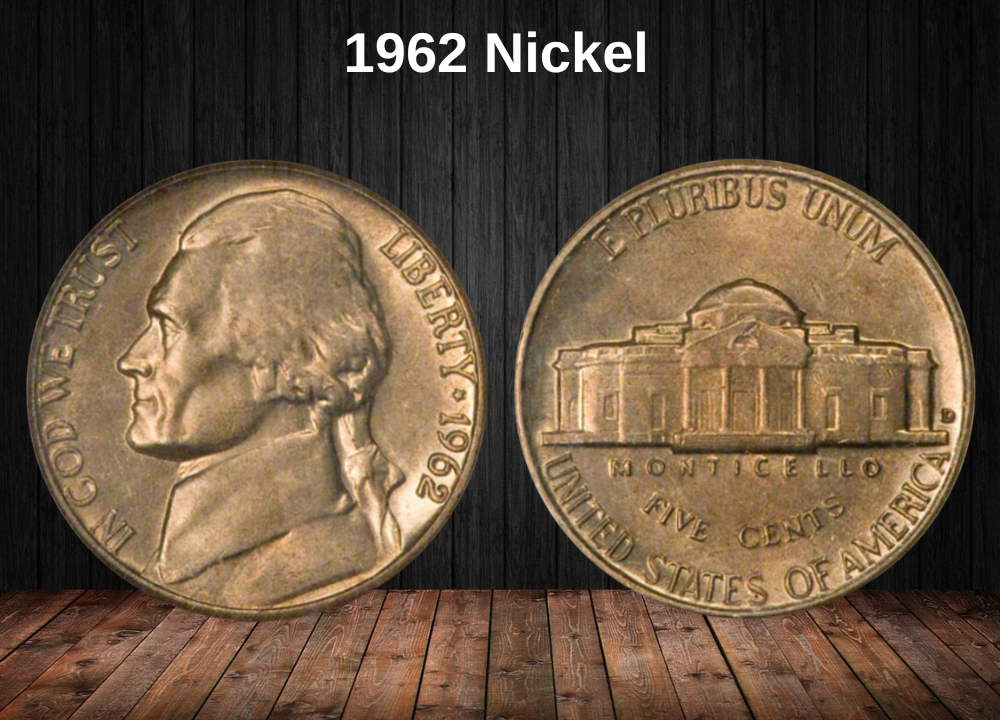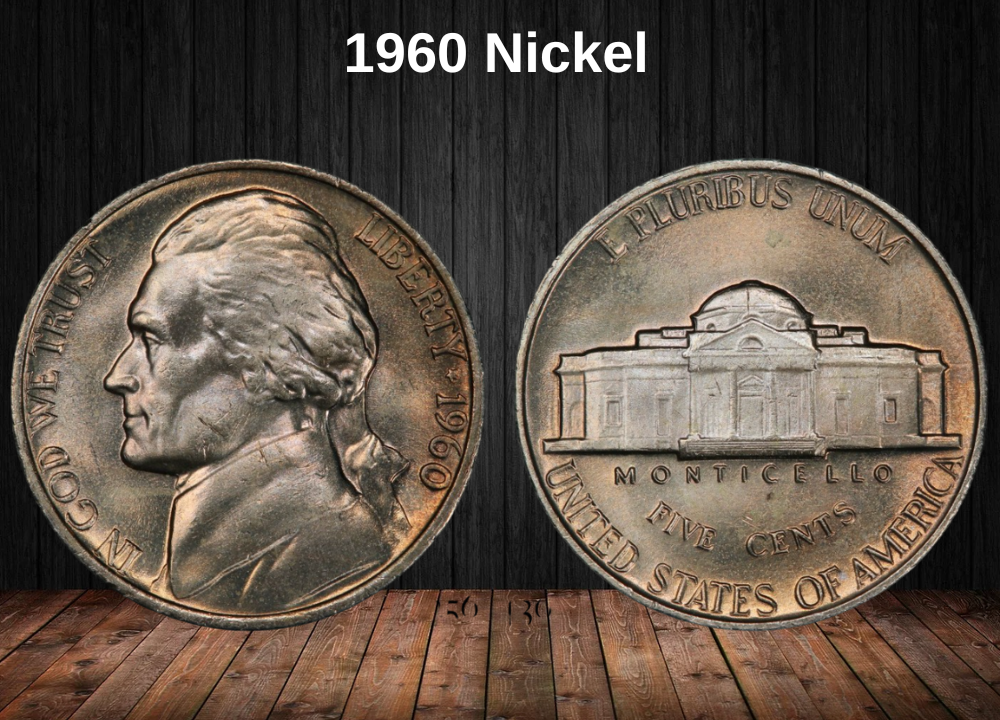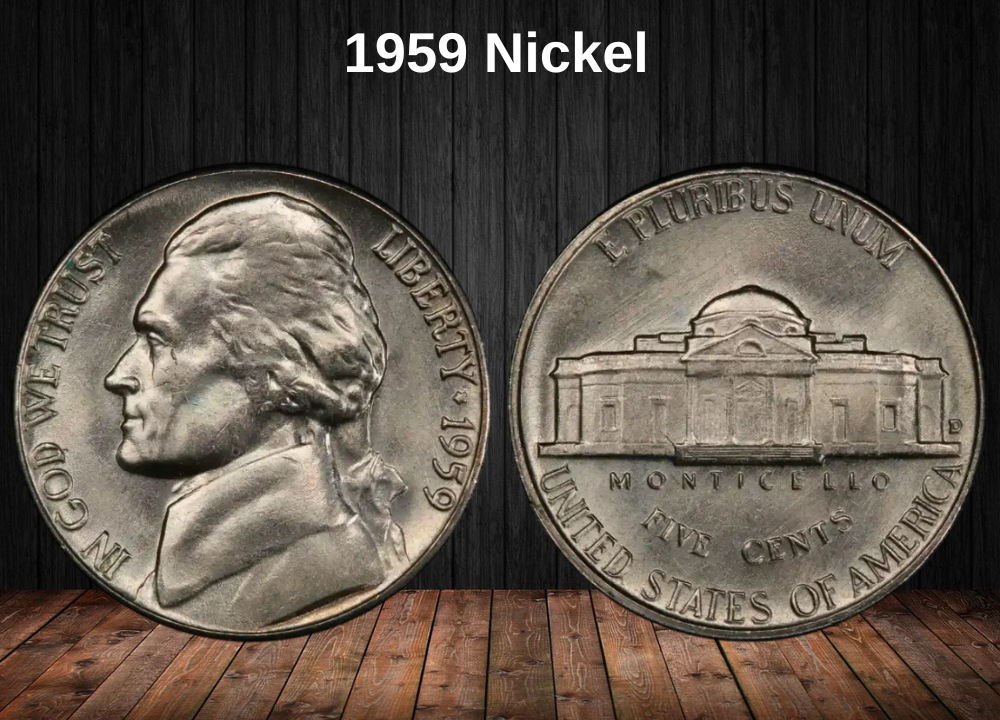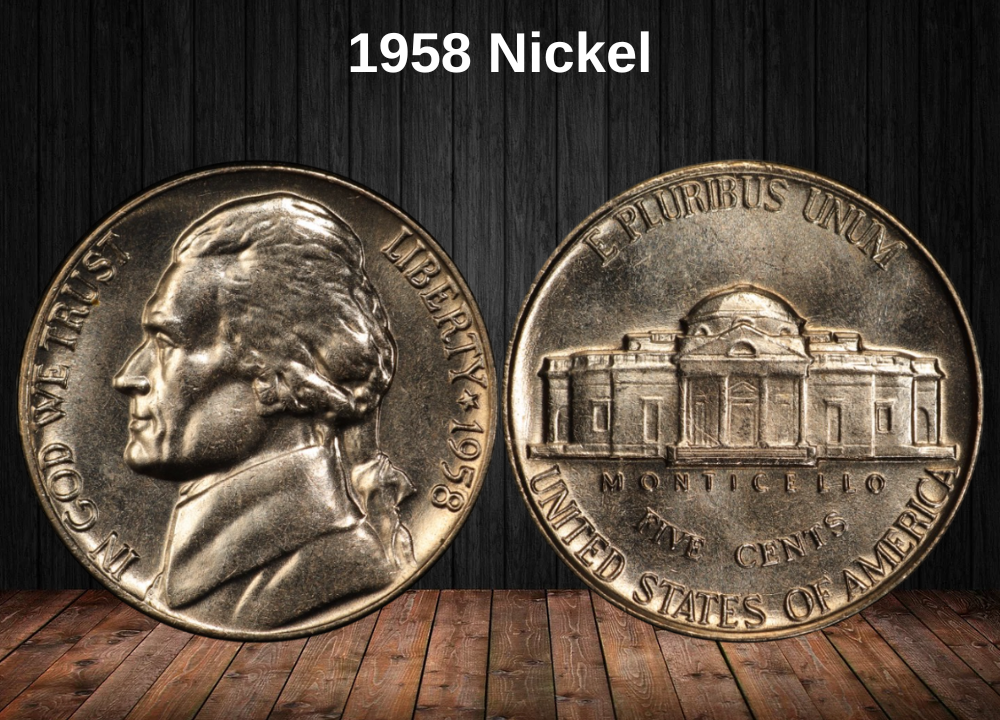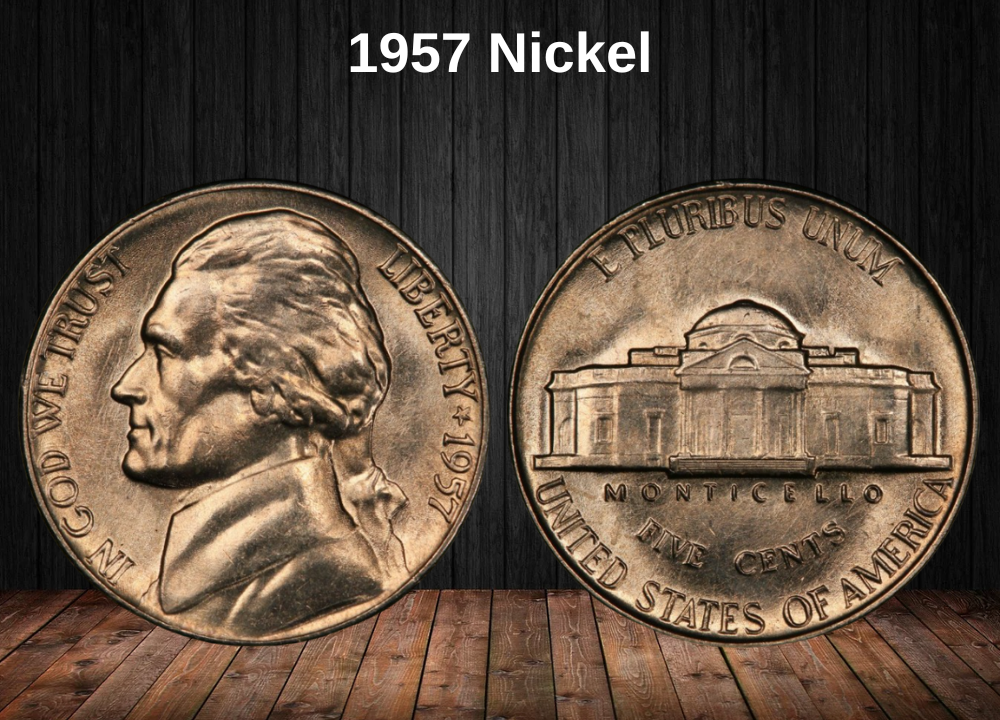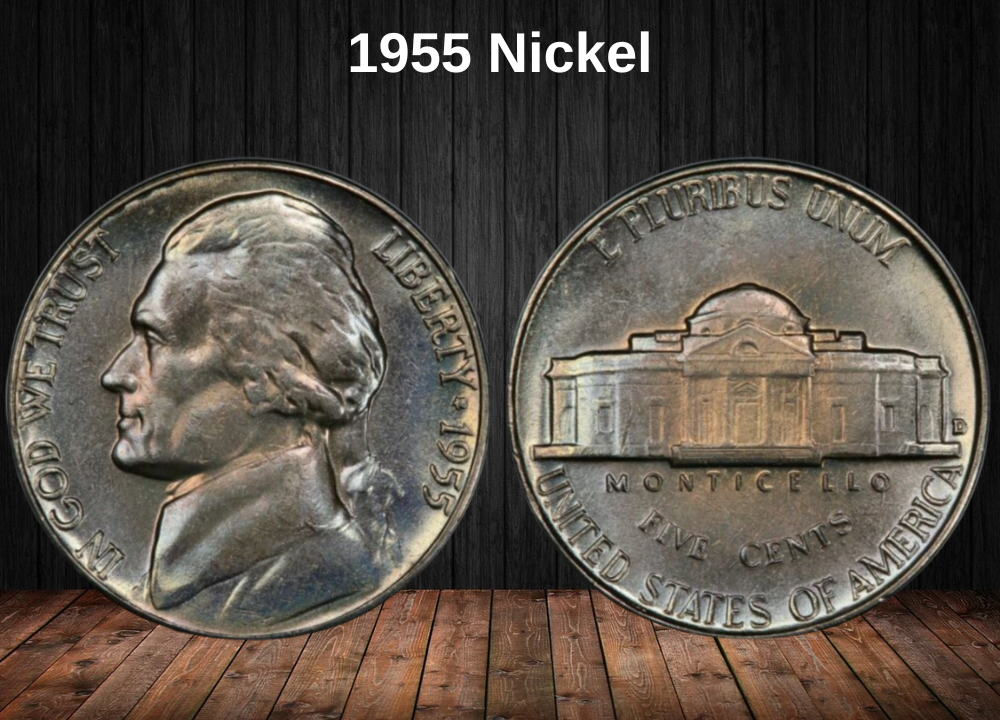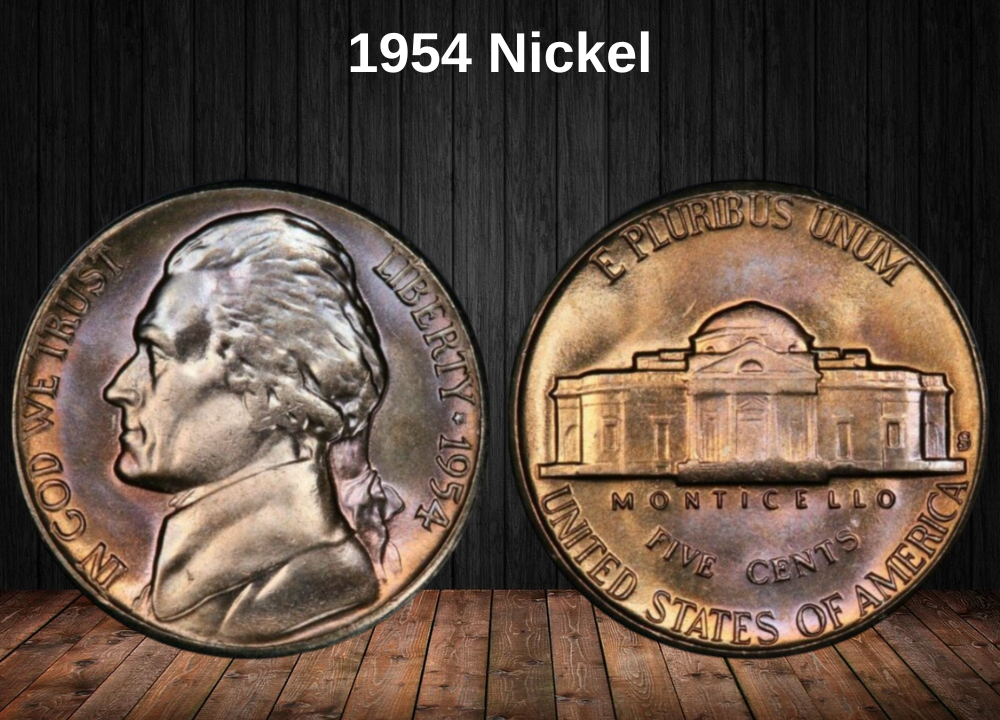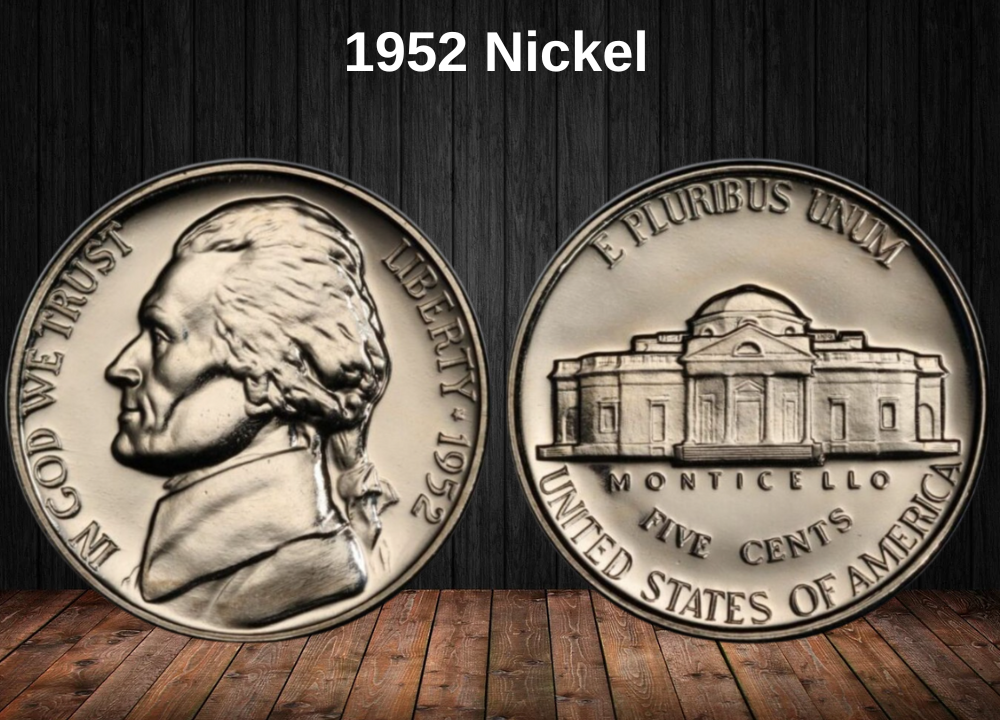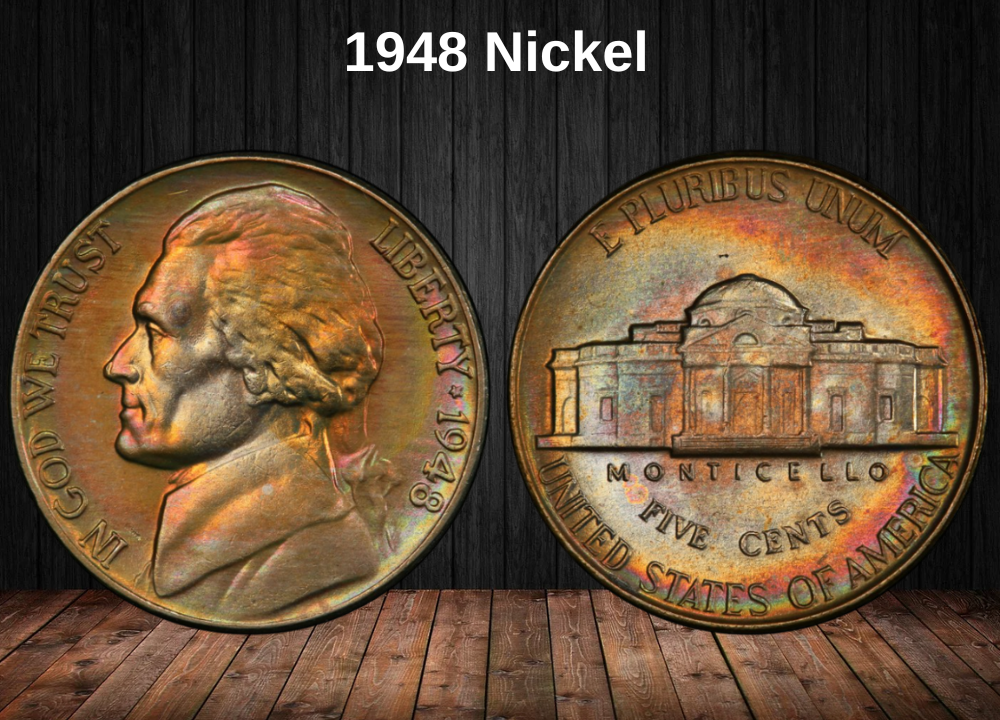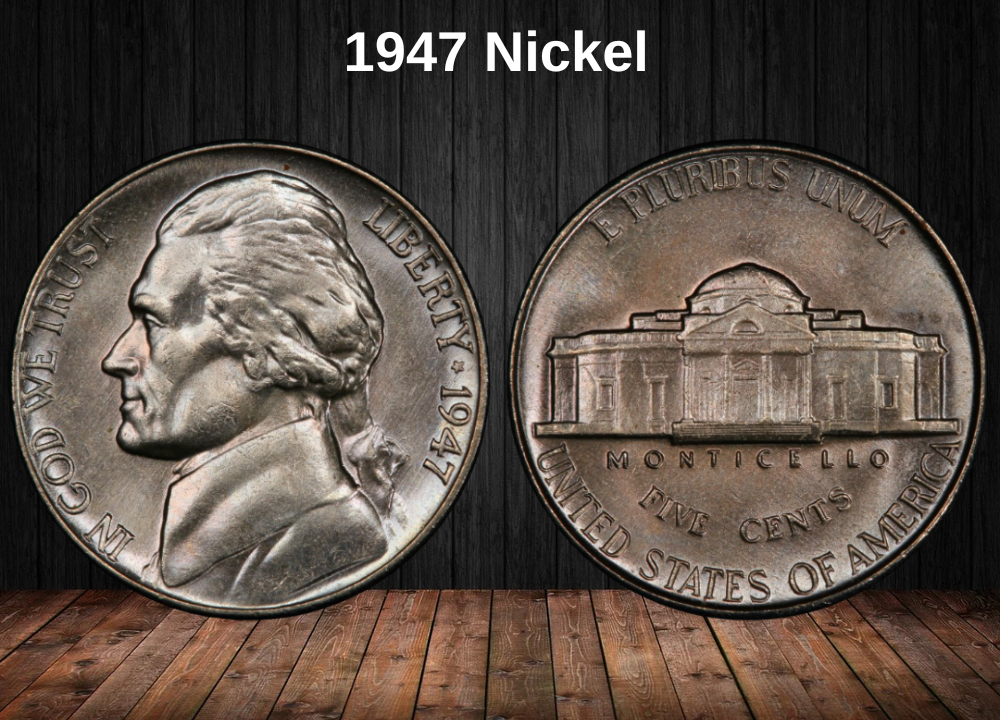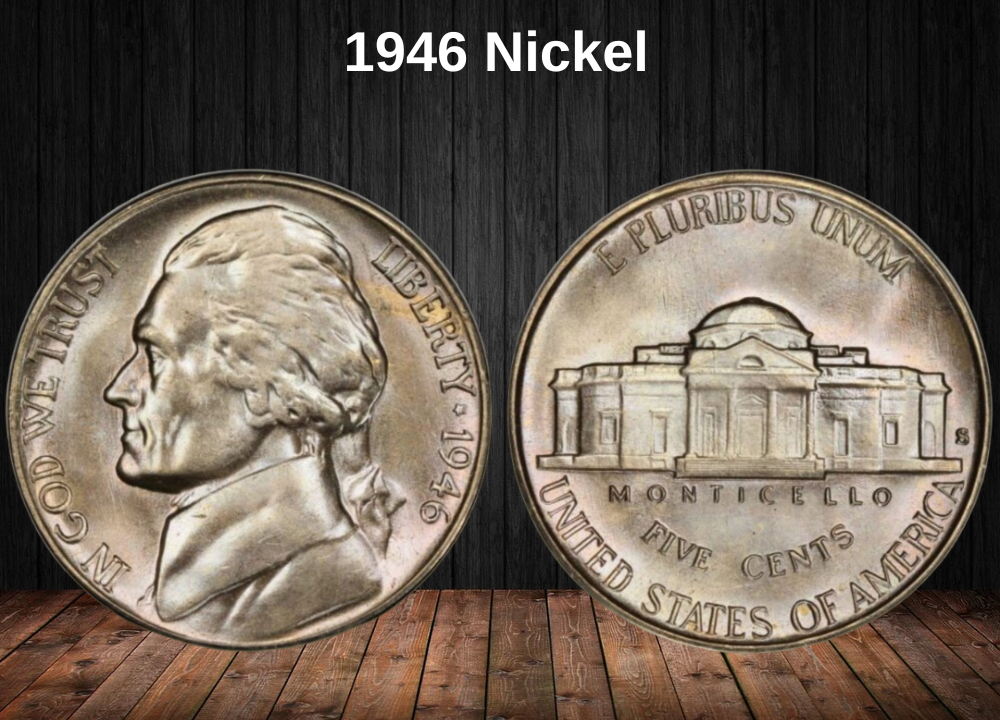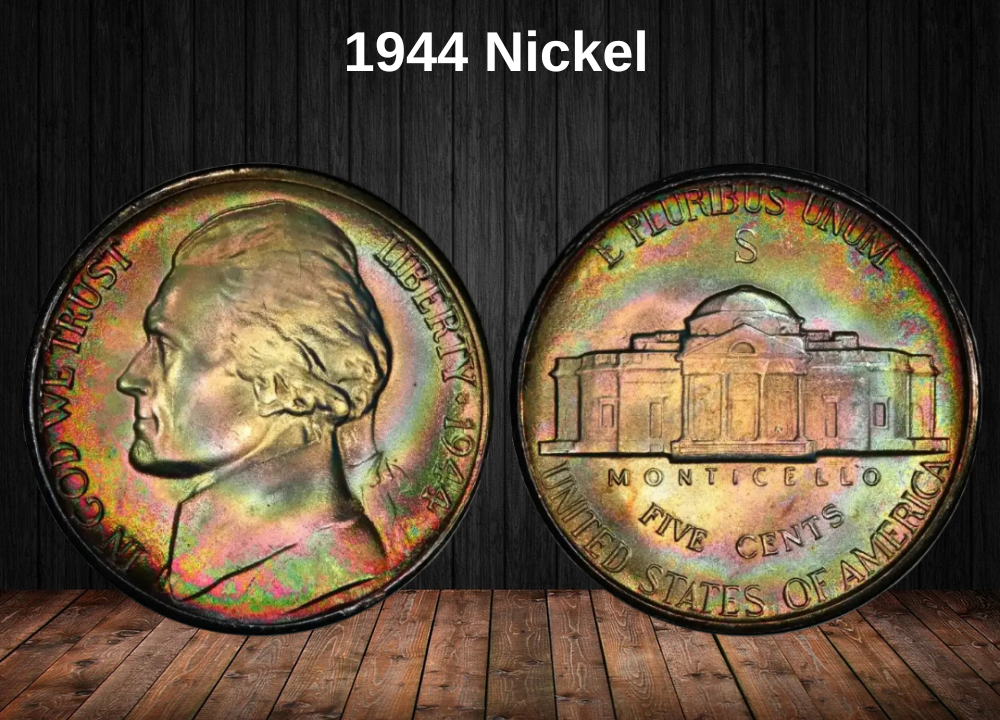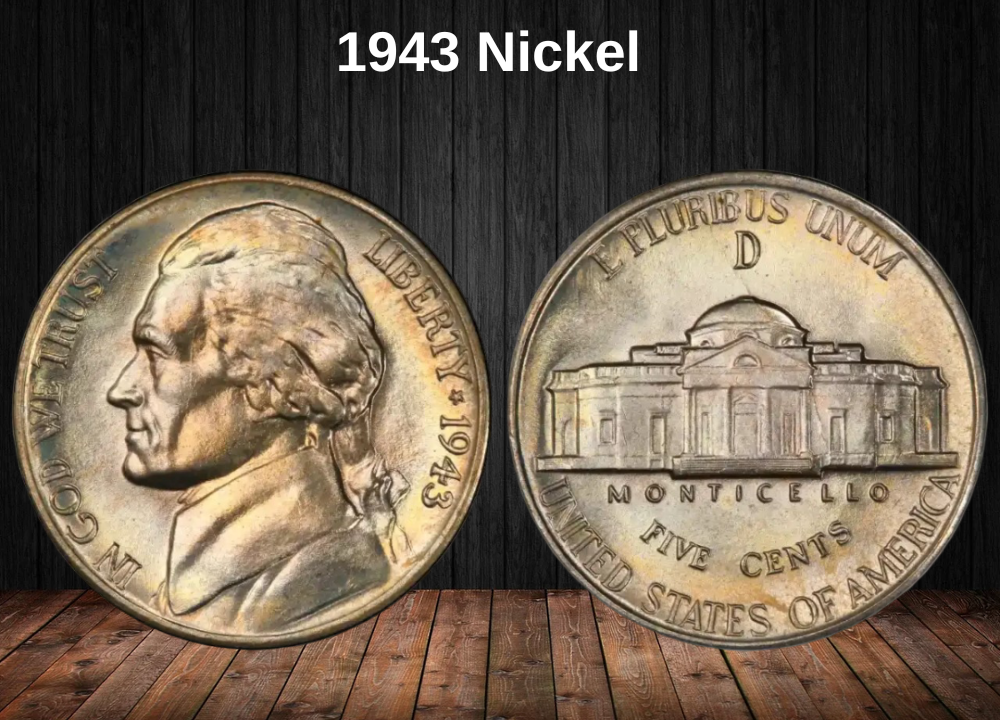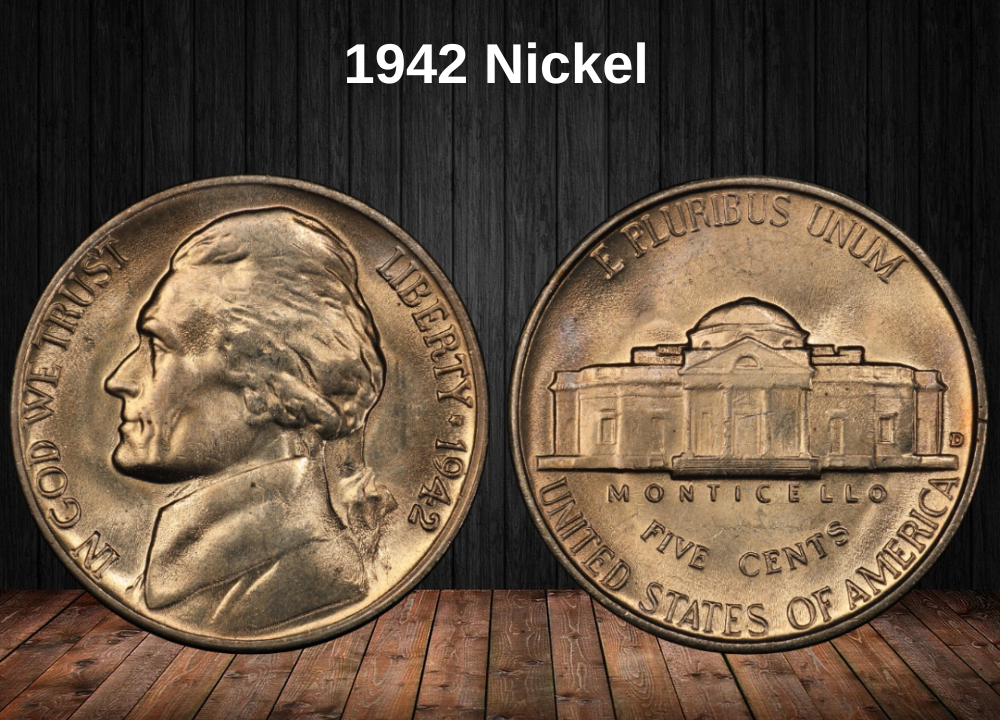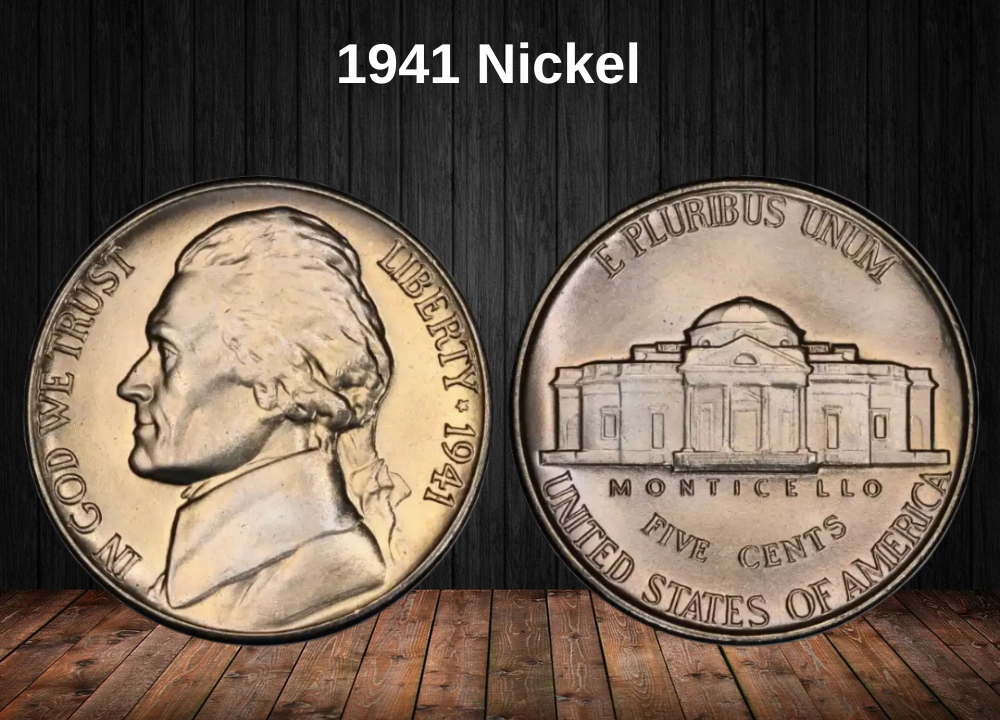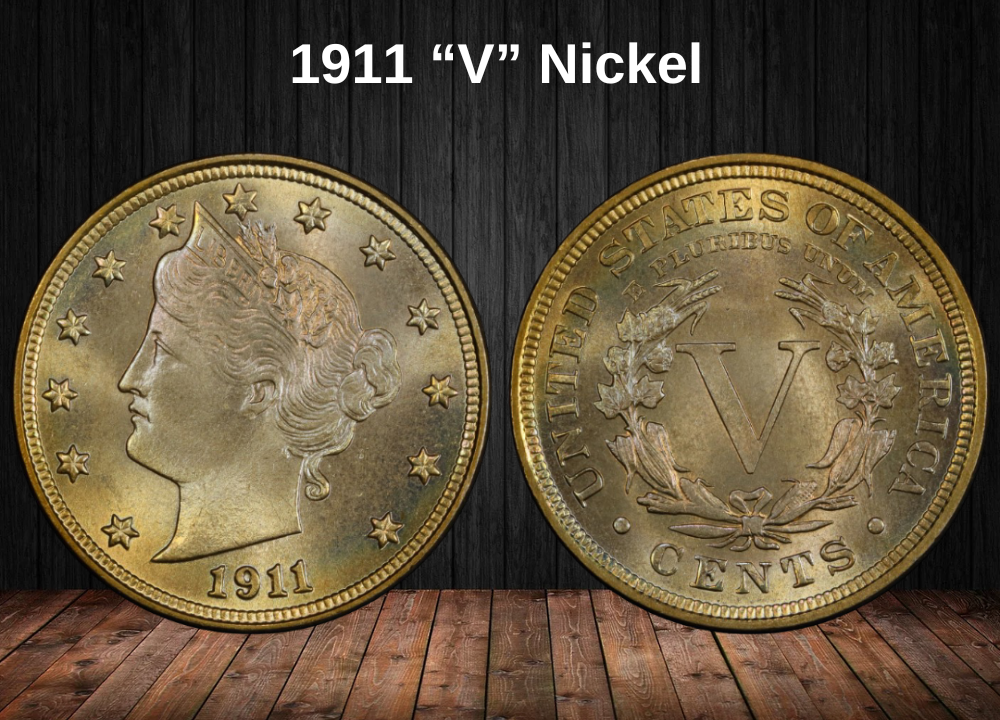1961 Jefferson Nickel Value Chart
| Condition | 1961 No Mint Mark Nickel | 1961 D Nickel |
|---|---|---|
| Mint State 60 | $2 | $2 |
| Mint State 65 | $15 | $24 |
| Proof 65 | $8 | – |
History of the 1961 Jefferson Nickel

The Jefferson nickel has been a staple of U.S. coinage since 1938. Designed by Felix Schlag, it replaced the Buffalo nickel and has remained in circulation with relatively few changes for over 80 years.
In the early 20th century, U.S. coins rarely featured portraits of real people due to tradition. That changed in 1909 with the Lincoln cent, and President Franklin D. Roosevelt later sought to modernize American coin designs. Admiring Thomas Jefferson, Roosevelt’s administration decided to feature him on the five-cent piece, with his home, Monticello, on the reverse.
In 1938, the U.S. Mint held a design competition, offering $1,000 to the winner. Schlag’s design was selected, but his original reverse was modified to show a frontal view of Monticello with classical Roman-style lettering.
By 1961, the design had already been in use for over two decades, with Jefferson’s profile and Monticello still prominent.
1961 Jefferson Nickel Types and Mintage
| Location | Year | Mintage |
|---|---|---|
| Philadelphia | 1961 No Mint Mark nickel | 73,640,100 |
| Philadelphia | 1961 proof nickel | 3,028,144 |
| Denver | 1961 D nickel | 229,342,760 |
| Total | – | 306,011,004 |
Design Features
Obverse:
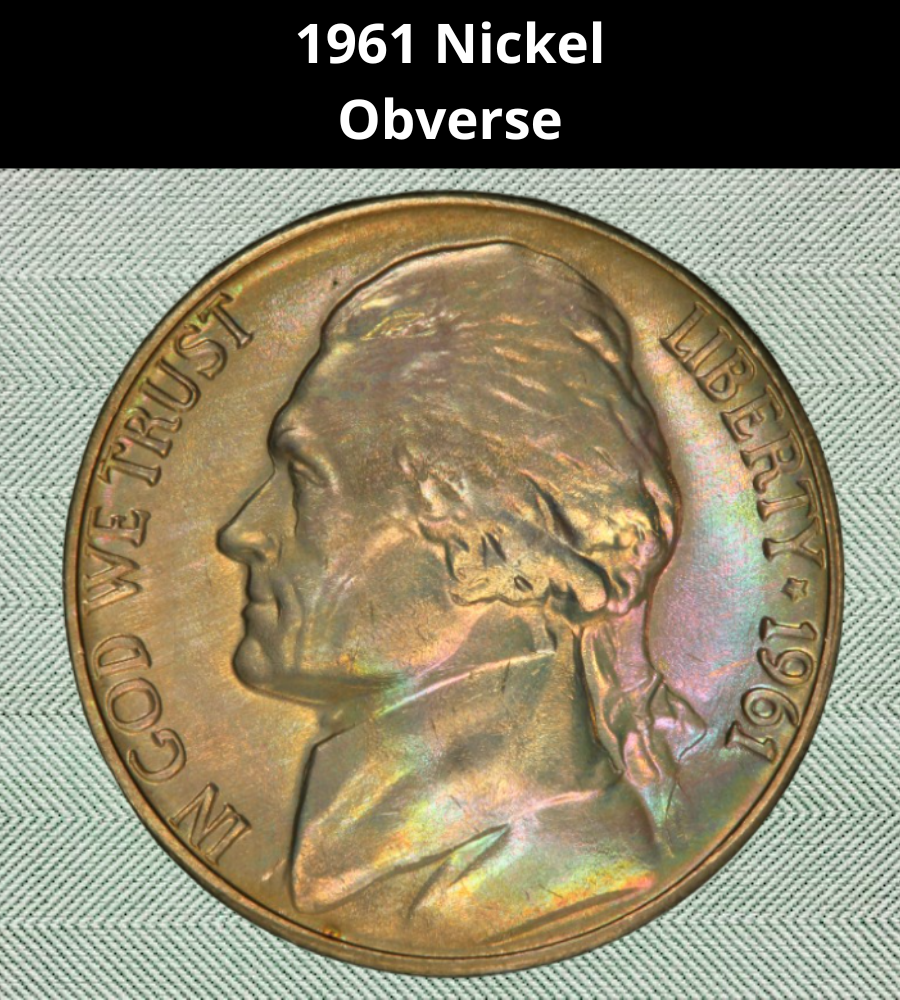
- Portrait of Thomas Jefferson facing left
- Inscriptions: IN GOD WE TRUST (left rim), LIBERTY and the date (right rim) separated by a star
Reverse:
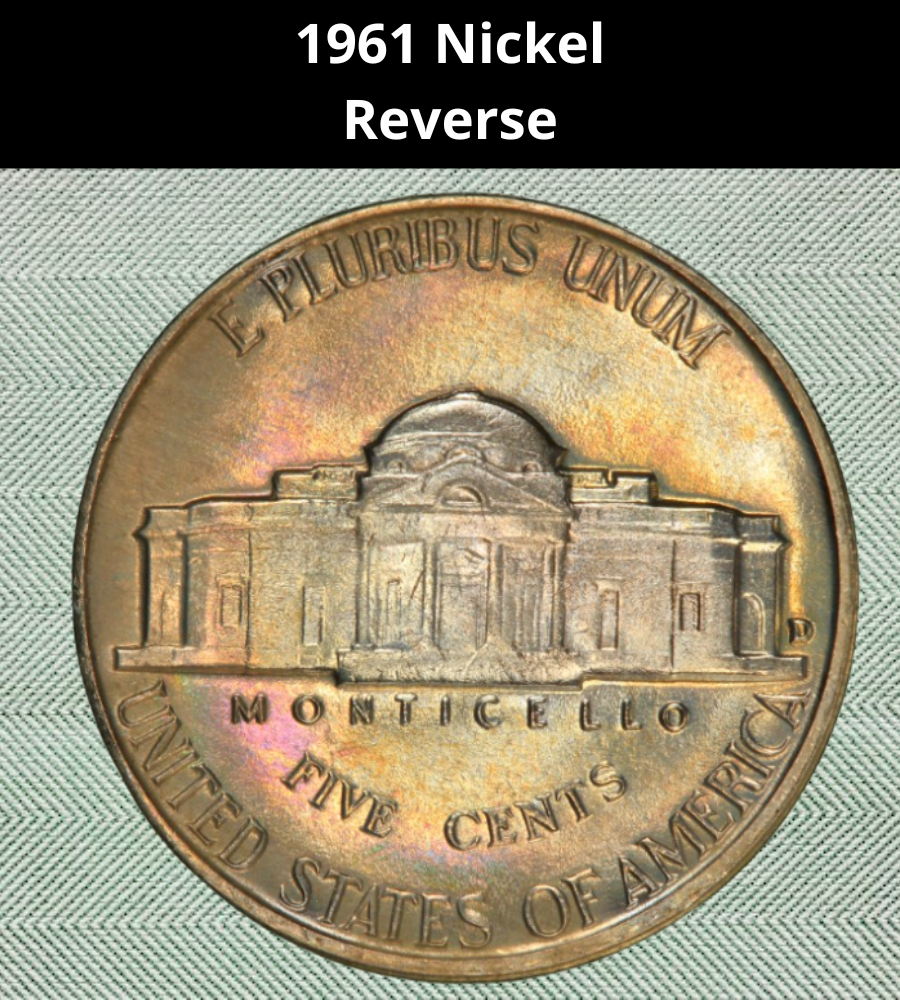
- Monticello building
- E PLURIBUS UNUM above
- MONTICELLO and denomination FIVE CENTS below
- UNITED STATES OF AMERICA around bottom
1961 Nickel Specifications
| Feature | Details |
|---|---|
| Face value | 5 cents ($0.05) |
| Weight | 5 g |
| Diameter | 21.21 mm |
| Thickness | 1.95 mm |
| Edge | Plain |
| Composition | 75% copper, 25% nickel |
| Shape | Round |
1961 Jefferson Nickel Grading Scale
| Grade | Description |
|---|---|
| 1 | Basal State |
| 2–3 | Fair |
| 4–6 | Good |
| 7–10 | Very Good |
| 12–15 | Fine |
| 20–30 | Very Fine |
| 40 | Extremely Fine |
| 50 | About Uncirculated |
| 60–70 | Mint State |
1961 Nickel Value by Variety
1961 No Mint Mark Nickel Value
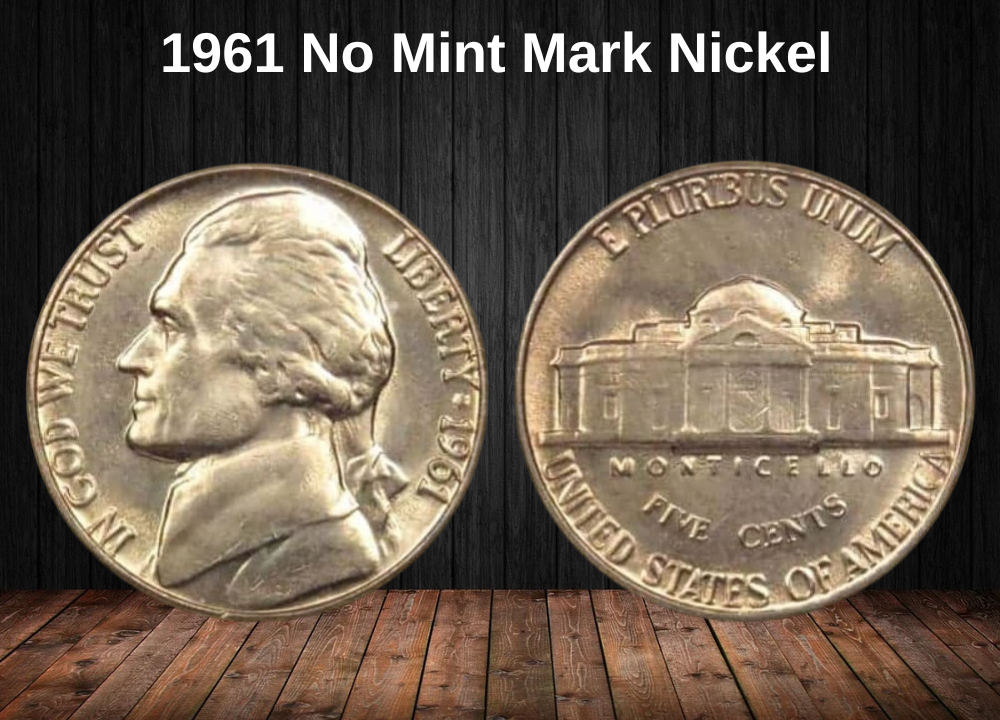
Minted in Philadelphia without a mint mark, this nickel is made of 75% copper and 25% nickel, with a weight of 5 grams and a diameter of 21.21 mm.
The coin features a sharp left-facing portrait of Thomas Jefferson on the obverse and Monticello on the reverse.
Most pieces were weakly struck in 1961, so high-grade examples with strong details—especially Full Steps—are scarce.
| Grade | Value |
|---|---|
| Circulated | $0.05 |
| MS 65 | $15 |
| MS 66 | $42 |
| MS 67 | $1,400 |
Full Steps (FS) Values:
- MS 64 FS: $1,500
- MS 65 FS: $4,000
- MS 66 FS: $8,500
Collector’s Note: This variety is desirable in high mint state grades and extremely valuable if certified with Full Steps designation due to the rarity of well-struck 1961 nickels from Philadelphia.
1961 Proof Nickel Value
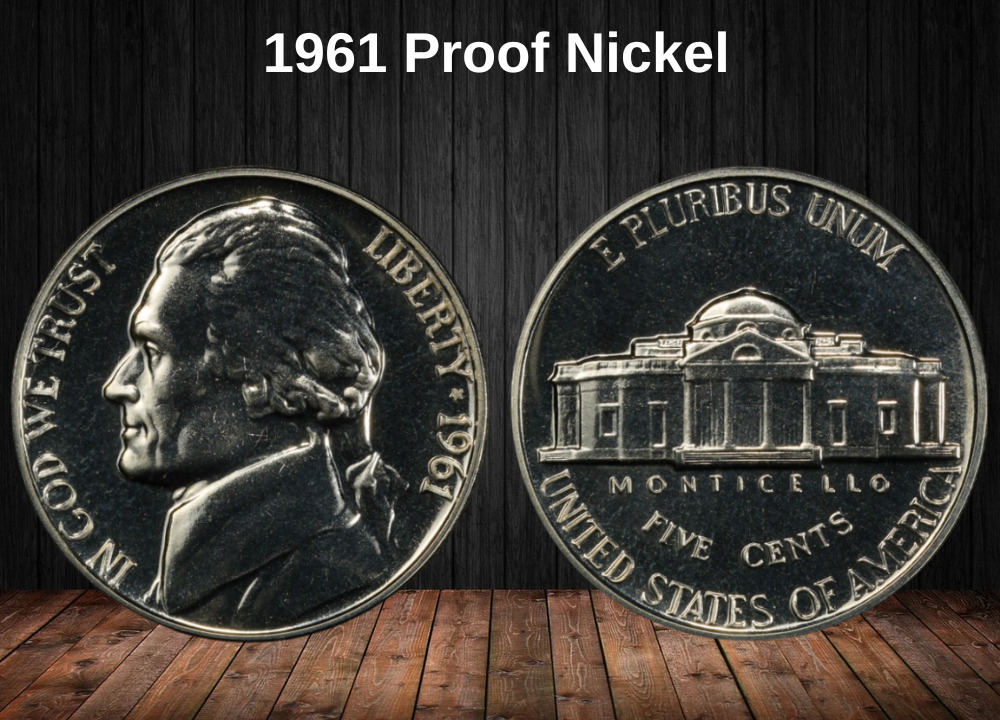
Struck at Philadelphia for inclusion in proof sets, these coins have a mirror-like surface created through polished dies and planchets.
They are made with the same metal composition but exhibit frosted devices and deep reflective fields, especially in Cameo and Deep Cameo finishes.
Proof coins were not meant for circulation, so nearly all examples are in pristine condition, but deep cameo contrast examples are rare and command premium prices.
| Grade | Value |
|---|---|
| PR 60–65 | $4–$8 |
| PR 66 | $10 |
| PR 67 | $12 |
| PR 68 | $17 |
| PR 69 | $135 |
Cameo Proofs:
- PR 65 CAM: $12
- PR 66 CAM: $20
- PR 67 CAM: $24
- PR 68 CAM: $100
- PR 69 CAM: $250
Deep Cameo Proofs:
- PR 66 DCAM: $70
- PR 67 DCAM: $130
- PR 68 DCAM: $425
- PR 69 DCAM: $3,800
Collector’s Note: Cameo and Deep Cameo coins are especially valuable due to their eye appeal and rarity. They are sought after by registry set collectors.
1961 D Nickel Value
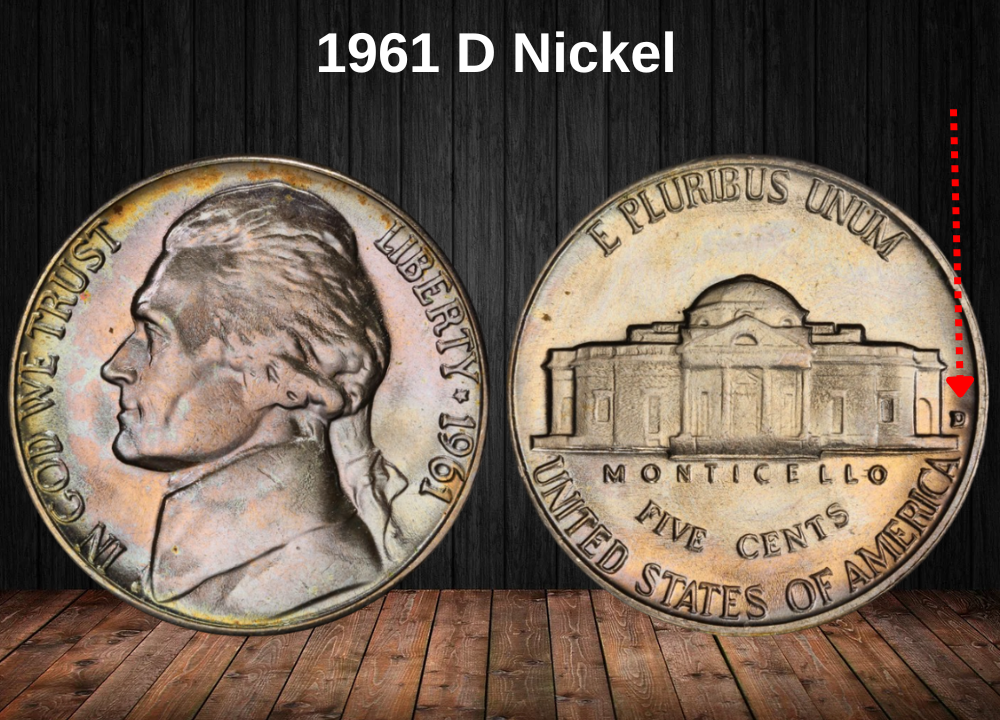
Minted in Denver with the “D” mint mark located to the right of Monticello on the reverse.
These coins were struck in massive quantities, but like the Philadelphia issue, strong strikes are not common.
Denver mint examples can show slightly better strike quality overall, but Full Steps pieces are still extremely rare and valuable.
| Grade | Value |
|---|---|
| Circulated | $0.05 |
| MS 64 | $10 |
| MS 65 | $24 |
| MS 66 | $160 |
| MS 67 | $4,500 |
Full Steps (FS) Values:
- MS 64 FS: $8,000
- MS 65 FS: $20,000
Collector’s Note: While common in lower grades, high-grade Full Steps Denver nickels are among the most valuable modern Jefferson nickels, often selling for five figures at auction.
Rare 1961 Jefferson Nickel Errors
Wrong Planchet Error
A wrong planchet error occurs when a Jefferson nickel design is struck on a blank intended for another denomination.
This can happen if a different coin planchet is accidentally fed into the coin press.
Examples include:
- 1961-D Nickel struck on a 10-centavos planchet (foreign coin) — sold for $1,175 at auction.
- Strikes on U.S. penny planchets (copper) — these coins are smaller in diameter and lighter, often showing parts of the design missing.
Collector Tip: These coins are easy to spot due to size, weight, and color differences. Wrong planchet nickels are rare and highly sought after.
Doubled Die
A doubled die occurs when the die itself carries a doubled image, usually from misalignment during the hubbing process.
The doubling appears on letters, numbers, or design elements.
Value Range:
- Common examples: $2.50 – $20
- High-grade, certified pieces: Can exceed $100, especially if the doubling is bold and visible without magnification.
Where to Look: On 1961 nickels, check “LIBERTY,” the date, and “MONTICELLO” for signs of doubling.
Tripled Die
Much rarer than doubled dies, tripled dies occur when the design is impressed three times at slightly different positions.
This creates a distinct triple image visible under magnification.
Example:
- A PR 66 FS tripled die reverse has been estimated at $170.
Collector Tip: Tripled dies are more common in proofs due to multiple hubbings but remain rare overall.
Off-Center Strike
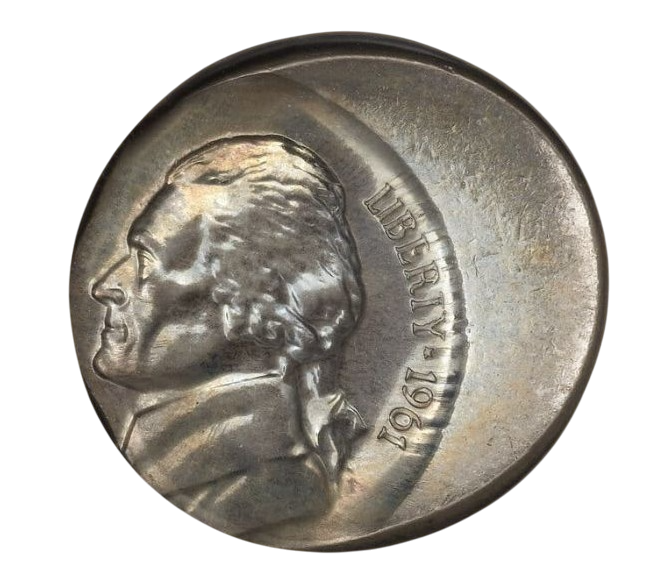
Happens when the coin blank is not properly centered in the press, causing the design to be shifted.
Values:
- 10–20% off-center: $15 – $30
- 50%+ off-center (with date visible): $100 – $400
Collector Note: The more off-center the strike and the more of the date that remains visible, the more valuable the error becomes.
Die Cracks and Cuds
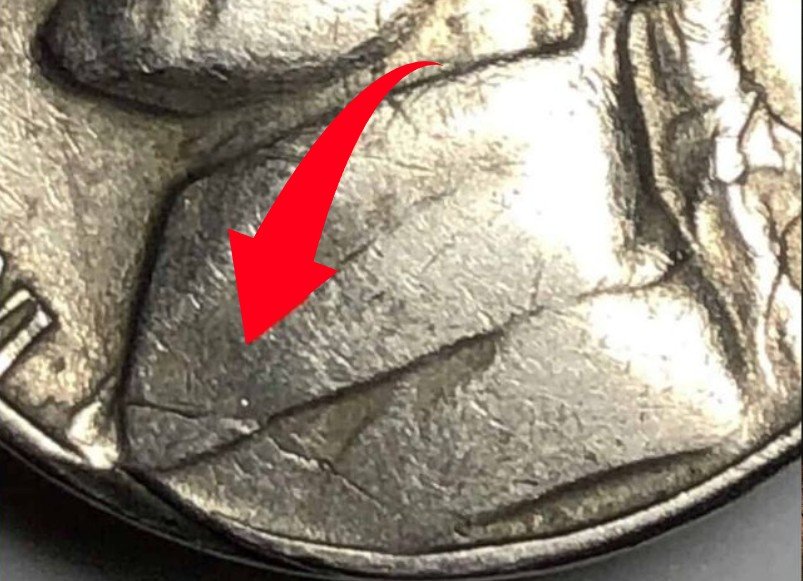
Die cracks are raised lines caused by fractures in the die, while cuds are larger missing areas where part of the die has broken away.
Values:
- Small die cracks: $5 – $20
- Large cuds: $50 – $150
Collector Tip: Cuds often appear near the rim, creating an odd-shaped “blob” of metal.
Strikethrough Error
Occurs when foreign material (like grease, wire, or cloth) is present between the die and planchet during striking.
Values:
- $20 – $70 depending on size and visibility.
Collector Note: Strikethroughs can create unique, one-of-a-kind patterns, making them especially appealing to error specialists.
Staple Strike-Through
A specific strikethrough error caused by a staple being pressed into the coin during striking.
The outline of the staple is usually visible and can be very sharp.
Auction Sales:
- Known sales range from $525 to $545 depending on which side of the coin is affected and overall condition.
Collector Tip: These are rare and command a premium due to their unusual appearance and clear cause.
Most Valuable 1961 Jefferson Nickels Sold at Auction
| Coin | Grade | Sale Price | Year Sold |
|---|---|---|---|
| 1961 D MS 65 FS | – | $23,000 | 2004 |
| 1961 MS 66 FS | – | $10,800 | 2022 |
| 1961 MS 67 | – | $6,325 | 2008 |
| 1961 PR 69 DCAM | – | $3,408 | 2021 |
| 1961 D MS 67 | – | $3,290 | 2015 |
| 1961 PR 67 | – | $1,380 | 2022 |
Where to sell your nickel?
Now that you’re aware of your nickel’s value, you may be curious about the best places to sell it. Don’t worry: here’s a rundown of some top online marketplaces where you can conveniently sell your nickels, along with their benefits and drawbacks.
Explore the best platforms for selling nickels online (advantages and disadvantages).
FAQ About the 1961 Jefferson Nickel
Q: Are 1961 Jefferson nickels rare?
A: Not in circulated grades, but Full Steps or high-grade mint state examples are scarce and valuable.
Q: Which is more valuable, 1961-D or no mint mark?
A: Both are common, but top-grade Full Steps from either mint can be worth thousands.
Q: What is a Full Steps nickel?
A: A coin where all six steps on Monticello are fully visible without interruptions, indicating a strong strike.
Q: Can I find valuable 1961 nickels in circulation today?
A: It’s possible but unlikely. Most valuable examples are found in old collections or mint sets.
Q: What is the rarest error for 1961 nickels?
A: Wrong planchet strikes and high-grade Full Steps proofs are among the rarest.

